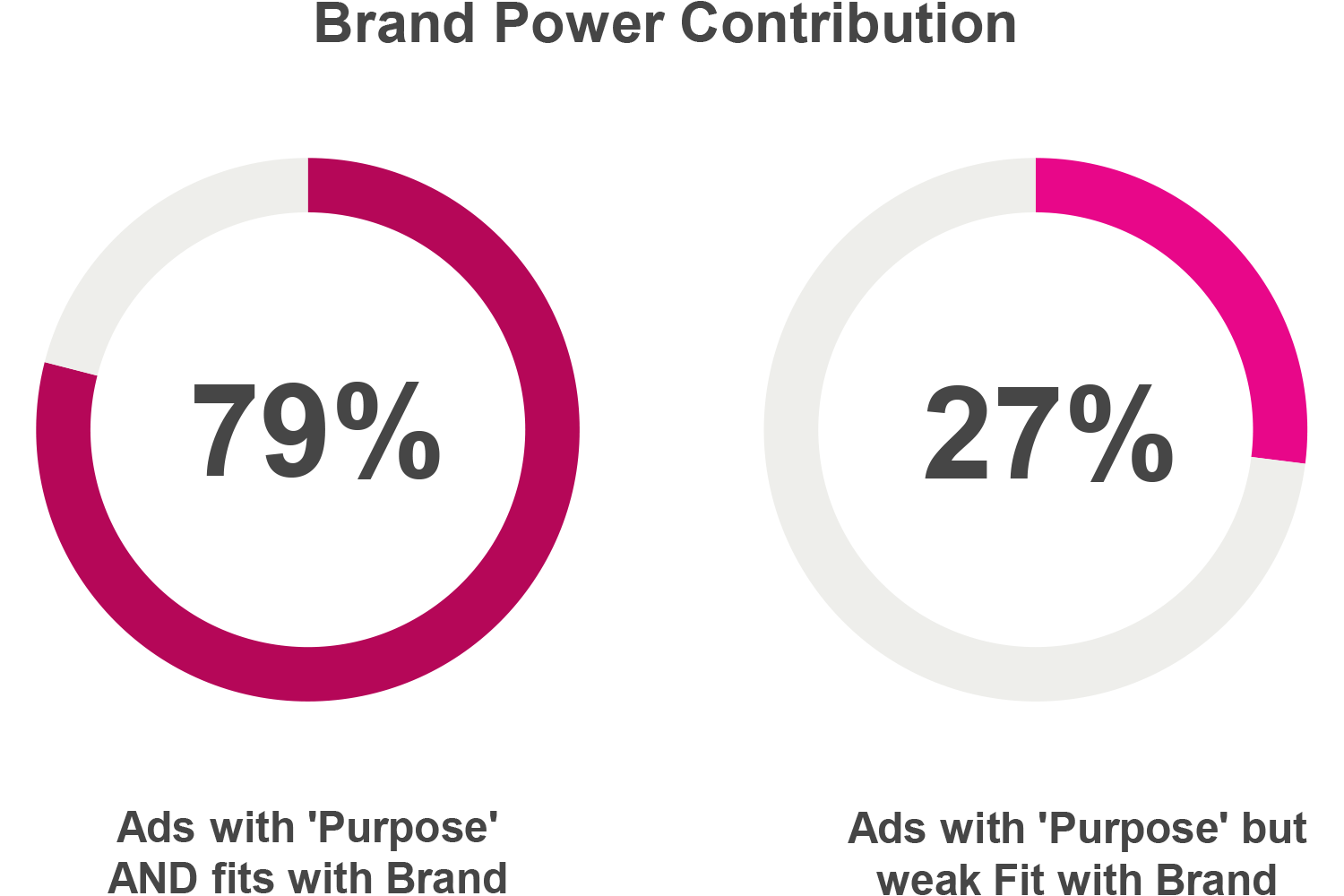People care deeply about social and environmental issues, and they are willing to do their part to make a difference. According to the Global Sustainability Sector Index, half the population say they are prepared to invest time and money to support companies to do the right thing, and 42% have stopped buying products and services due to the environmental impact they have. Brands have an important, yet challenging, role in helping people act more sustainably. Our study shows that 63% of people worldwide think brands should take the lead on sustainability, but a similar proportion (64%) worry that brands are involved in these issues for profit only.
With many ads getting banned by local regulatory bodies for overclaiming environmental impact, and consumers accusing brands of greenwashing, the question is how can you address sustainability in a way that is authentic for your brand and motivates people’s behaviour?
According to our Link ad testing database of more than 230,000 ads, the number of ads that address social and environmental issues has tripled since 2016, now at 6%.
To find out how to help our clients get sustainable messaging right we analysed consumers’ emotional responses to the 25% most- and least- effective ads with sustainable or social messaging in our database with Link and Affectiva’s Emotion AI facial coding. We also tested a series of ads on Kantar Marketplace with Link Express with facial coding. And we evaluated the data with a behavioural science lens to understand which psychological levers the top performing ads use to connect with consumers on sustainability.
Based on our analysis we identified five critical elements for effective sustainable advertising.
Be authentic
Be true to your brand and where it stands in the field of sustainability.
Our analysis shows that social and environmental messaging alone doesn’t drive advertising performance. It’s not enough to talk about brand purpose and sustainability - the purpose needs to fit a brand’s values. It needs to be authentic for your brand. Otherwise, you risk alienating people who are already sceptical of brands’ actions in this space.
We split over 600 purposeful ads into two groups, one where viewers say that the idea fits with the brand, and one where they say it doesn’t. The results were dramatic. Where there is a fit with the brand, the ads perform radically better on many measures – the potential impact on brand equity, salience, immediate persuasion, enjoyment, credibility, and ease of understanding are all higher.
Simply talking about brand purpose and sustainability doesn’t equal success
 Source: Kantar Link database
Source: Kantar Link database
Understand your audience
It is essential to understand people’s attitudes to tackle the barriers to sustainable behaviour.
Consumers are not all on the same journey towards sustainable living. The creative choices you make will resonate differently with people with different attitudes. Our Sustainability Sector Index classifies people into four groups according to their level of engagement: Actives, Believers, Considerers, and Dismissers. The emotional responses of these groups to the ads we tested were markedly different.
Segments respond differently to sustainable messaging
 You can even reach people who aren’t engaged in sustainable behaviour with the right messaging. But the opposite is also true, you can alienate people who are sustainably active with the wrong messaging. Understanding the psychological levers that influence consumer behaviour and how your ads are received by your audience is key (watch our webinar to find out more about this).
You can even reach people who aren’t engaged in sustainable behaviour with the right messaging. But the opposite is also true, you can alienate people who are sustainably active with the wrong messaging. Understanding the psychological levers that influence consumer behaviour and how your ads are received by your audience is key (watch our webinar to find out more about this).
Be constructive
Show how the brand can help people make a difference.
In addition to fitting with your brand values, it is important for sustainability ads to move beyond talking about the actions your brand is taking. Instead, ads should demonstrate how your brand can help people change their behaviour and educate them in an accessible way.
The “First day out” creative from the Co-op is a great example. In this ad the UK retailer encourages daily behaviour change through a heart-warming story and infers the impact with a clear connection with nature. It announces that you can now recycle soft plastics at the store in a customer-centric way, with the main character demonstrating the act of recycling and a friendly response from staff.
The ad models positive behaviour and shows viewers how their actions can be meaningful, giving a sense of control, and showing how the brand can help people act on their intentions to behave sustainably.
Get emotion right
Leave people feeling hopeful and confident, and empower them to change.
Sustainability is an area that evokes strong emotions and opinions, and sustainability campaigns are no different. We see that ads with social and/or environmental messaging evoke stronger emotions – both positive and negative. Campaigns that speak to these issues should do the same. And that means it must get the emotional tone right.
Ads with social or environmental messages can evoke strong emotions
 Source: Kantar Link database
Source: Kantar Link database
Our analysis shows the power of getting emotion right, and the pitfalls of getting it wrong. While some ads make people feel worse or cause rejection, the top-performing ads positively engage viewers. Our top-performing sustainability ads have a more uplifting tone. They elicit more positive emotions like valence (overall emotional positivity), smiling and joy. Prioritise a hopeful and positive tone to stop people feeling berated or rejecting the message altogether.
Emotions can make or break an ad of this type. While it can be effective to leverage negative emotions such as guilt, it is crucial to leave people feeling hopeful and confident. Otherwise, you risk alienating them.
Be relatable
Make serious messaging accessible and relatable with the right tone.
Don’t be afraid to use humour and other creative devices to strike the right balance between the problem and the solution. Humorous ads are generally more expressive (+27 points), more involving (+14) and more distinct (+11).
The recent Super Bowl ad from Hellmann’s is a great example of using humour to make sustainability relatable. It features the New England Patriots’ linebacker Jerod Mayo tackling food waste by physically tackling people who are about to waste food and showing them how to avoid waste with Hellmann’s mayonnaise. It concludes with a powerful and memorable end line ‘Make taste not waste.’
To get sustainability right in your communications, be authentic and true to your brand. Make sure you understand your audience and their levels of engagement. Be constructive and relatable, and most of all make sure you get the emotions right. To make sure you tick these boxes you can cost-effectively test your ads in as few as 6 hours with Kantar Marketplace.
To learn more about our research watch our on-demand webinar where we uncover the psychological levers used by top-performing ads and show examples of these in action. And please get in touch to discuss further.


